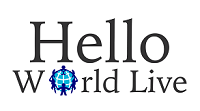It’s a great time to get yourself trained for a career in barbering. It can provide you with a great income and a potentially steady stream of clients. After all, more men are spending money on their looks these days.
However, it’s not an easy job to take on. You can’t just pick up a pair of shears or snips and start cutting hair. You need to have both training and the right tools before you get started.
What does that entail? Well, here are some things that you can use if you want to become a professional barber:
- Scissors
Scissors are an important tool when it comes to barbering. The type you choose depends on your preference but must perform all the functions required of them. There are different types, like shears (which are used to cut thin or bulkier materials), thinning shears (which are good for producing wispy, soft cuts), and texturizing shears (ideal for chopping off excess length), among others.
The five factors to consider when looking for the perfect barber scissors:
- Type of blade (bent or straight) – For beginners, a bent blade is best. Straight blades are easier to handle but take time and practice to develop good cutting skills.
- Style (bypass or thinning) – The style you choose must correlate with your haircut intentions.
- Material (forged or stamped) – Also, consider the material used so you can gauge how long your tools will last.
- Edge (for right-handed or left-handed people) – For sure, choose one meant for your dominant hand.
- Purpose (convex or hollow ground) – This refers to the cross-section of the blade. Convex blades are rounder compared to hollow ground blades, which are flatter at the sides.
- Hairspray/Styling Products
You don’t need to buy the most expensive hair products in town. Just make sure you choose one meant for your desired hairstyle and can be easily layered on throughout the day.
These include products like mousse/fiber for making your hair have that extra volume, gel for helping fix trims, and spray for adding shine and keeping styles in place. It’s also water-based, so it’s easy to wash off after styling sessions.
Over the past few years, more men are investing in their beards and stubble, which means you might also need products intended for these. Some options are beard oil for keeping them healthy-looking, beard shampoo for washing off excess dirt, and wax to keep them under control.
- Clippers and Trimmers
No matter what type of hair or beard you will be shearing, the clippers you choose must be able to trim all of them. It also needs to have different accessories so that it can work on facial hair, body hair, and even the nose.
An adjustable clipper is best for beginners because it allows you to adjust how close or how thick the blades are when in use. Clippers with cords are best for beginners, but it’s also best to have one with a cordless option.
You also need to pick clippers and trimmers according to blade length. For barbering, choose one with a size of 000 or 1. Some come with combs, which you can use to cut three different lengths: stubble (1/8th of an inch), short (3/16th of an inch), and medium (5/8th of an inch).
These tools need proper cleaning and maintenance after every haircut. Blades must be oiled so that they don’t rust, while combs need to be cleaned with alcohol or boiling water. Cleaning kits are particularly helpful because they include the brush and oil you need for proper maintenance.
- Comb
One of the oldest tools in the barber’s arsenal is the comb. While other hairstyles may have longer teeth, short-tooth combs are best for classic cuts. The basic comb comes in two sizes: 3 ½ inches and 7 ¼ inches.
They can also range between $4 and $6, depending on the material used:
- Plastic is cheap but cannot last long.
- Stainless steel is a more expensive material but can last a lifetime if properly maintained.
- Carbon steel, meanwhile, is the most expensive material but can give you that extra edge in styling.
- Wood is also an option but may absorb dirt and germs over time.
- Mirrors and Accessories
You need to look at yourself as you work so that you know how the haircut looks as it’s taking shape. Mirror fixtures can be fixed or handheld, so take note of where you will be cutting hair, so you can choose one that is best suited for the job. The wall-mounted mirrors are great for salons because they don’t move around during use.
You also need to secure the mirror with anti-slip pads, which prevent them from moving while you’re cutting. It’s also best to get an adjustable mirror, easily attaches to the wall, and has magnification.
It’s also a good idea to get a shaving mirror for beards and stubble trims. Some hair salons use shaving mirrors mounted on the wall so customers can get a clear view of how they look from different angles.
In addition, you may also want to have cotton wraps, threading needles, and an after-shave solution. Cotton wraps are for putting under your neck when you’re shaving, while threading needles make it much easier to fix trims when the hair is thinning out.
When you’re just starting, invest in quality tools and products. You can always get cheaper alternatives later on, but it’s best to have them around during the early days.

